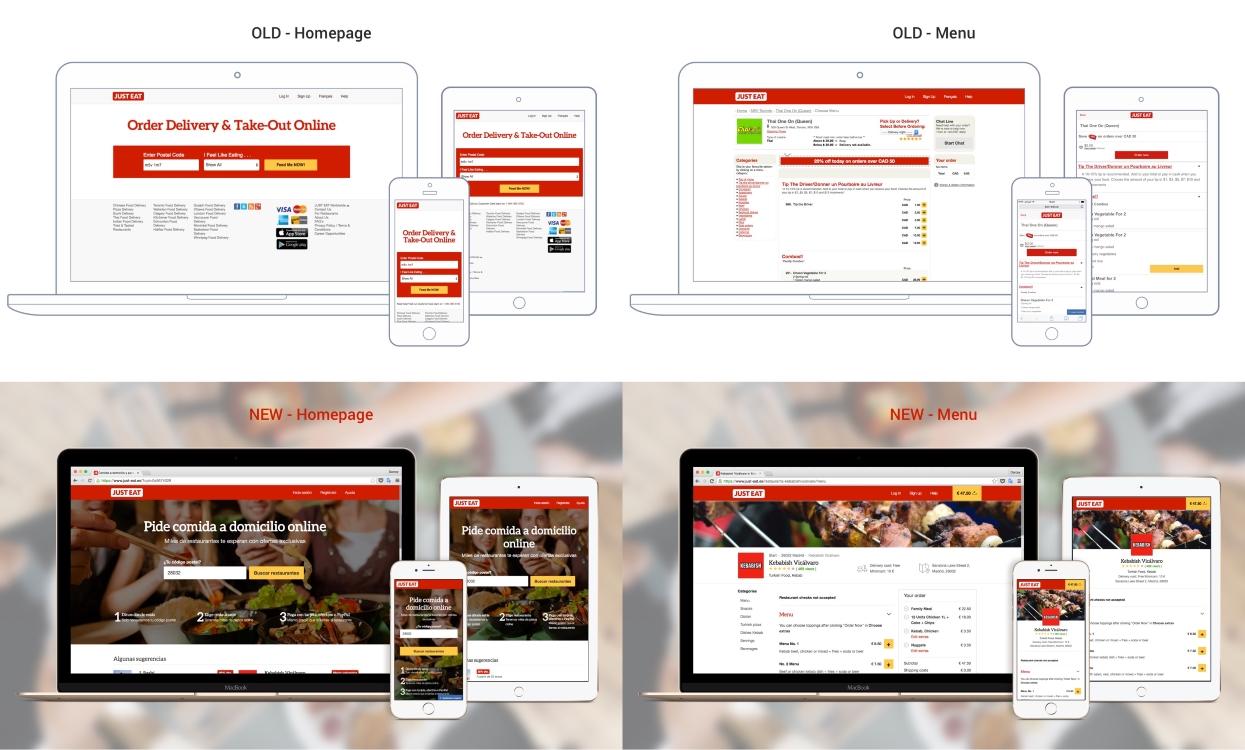In 2015 we began a project to migrate countries running the legacy JUST EAT frontend application to a new platform – a change that delivers enhanced features such as responsive design, backed by a component based microservices architecture, opening up new doors to innovation for myself and other Product Managers to explore.
Migrating a country to the new platform gives users in that country a better JUST EAT experience and provides us with new tools to support the business of our restaurant partners. The flipside of such a change is that there is a new list of product enhancements for the team of software engineers I work with to deliver. Old development plans are thrown out the window, and feature requests are reconsidered based on changes in functionality and capability of the new platform.
The initial migration is handled by our Platform Improvement team, whose core remit is to ensure feature and performance parity between the new and old platforms. By the time the site lands in my team post-migration, all urgent problems will have been addressed and the key performance indicators of the site will be at, or exceeding, pre-migration levels. It then becomes my responsibility to work with my Technology Manager and software engineers to prioritise and resolve any outstanding issues, and build a roadmap for the future with the country teams to take advantage of the new platform.

Following the successful migration we assess the processes that are in place, and look to shift them from a short-term tactical solution to build a longer term strategic partnership between country and technology team. This involves taking an active part in the relationship towards the end of the migration and building a relationship with all key stakeholders to ensure a smooth handover.
Effective visibility of progress
Typically during high pressure activities such as platform migrations, quick and easy tools such as shared spreadsheets are used to manage the project. These are familiar to people and simple to edit, allowing everyone involved to send updates and responses easily and quickly. However, over time spreadsheets and any documents not dynamically linked to the source information get out of date and become a chore for everyone involved to keep in sync. This eventually leads to people working from different versions of the “truth”.
To improve upon the use of shared documents,we replaced this with the use of a wiki page. The JUST EAT wiki tool is Confluence, which is from the same suite as our development issue tracking tool, JIRA. Based on saved filters in JIRA we pull in charts and tables with the information we need to discuss priorities and progress with country management. Managing the filters in JIRA means that we can reuse them for different countries, and if an improvement is needed then this can be made across the board without having to update each country page individually.

This means that the country staff know the latest information about the progress of each ticket in one single place. No more need to copy and paste information to update spreadsheets, no more working from an old version of the truth and happier stakeholders due to increased visibility of platform improvements.
Staying in touch
During the migration, the team handling the work had daily calls with the country to work on defects and signing off changes. This is not a long term communication strategy and we have now transitioned to weekly calls (well, Google Hangouts actually) with an an agenda alternating between strategic and tactical each week. These have allowed us to keep on top of defect priority for the country and shift our focus on short term to longer term strategic development work.
In addition to weekly calls we’ve flown out to each country, visiting the JUST EAT offices and building relationships with the country management teams. The value of face-to-face meetings cannot be underestimated, and even in today’s global instant-messaging world, nothing beats physically meeting someone in person in order to build a strong relationship. And, to maintain these good relationships we aim to visit each of our countries at least once a quarter, to check-in and carry out quarterly reviews and perform high-level planning – covering those topics that aren’t quite as easy while talking with slightly raised voices (as you’re never quite sure if they can hear you clearly) into a “Chromebox for meetings”.
Looking to the future
We’re never quite sure what the future will bring; we can try to predict what will happen and sometimes we’re right, sometimes wrong. But whatever it brings, it’s crucial for us in IPD to maintain strong relationships with our countries. We will continue to look for tools and process improvements to make international collaboration easier and to make our colleagues feel more involved in product development wherever they are. Ultimately, with all of this, our aim is to make sure that our colleagues around the world are kept well informed and most importantly confident that we’re supporting them and their business.
Comments are closed.